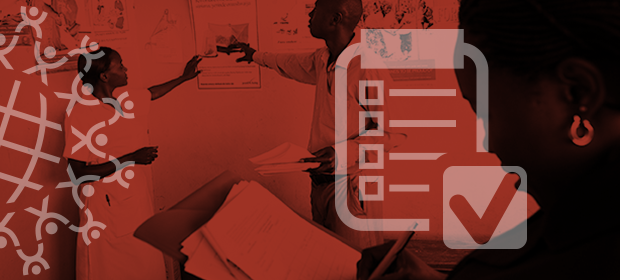Where We Work
See our interactive map


Measuring “unmet need” has helped countries make great progress in family planning. But is there something better?
How do we measure success in family planning? And is there a better way?
Most countries have typically measured two key statistics: unmet need (the percentage of women, either married or in a union, who don’t want to become pregnant, but are not using contraception) and the modern contraceptive prevalence rate (mCPR).
But could those two measurements be combined to create a more powerful, more complete indicator of family planning progress in countries around the world? Experts from the US Agency for International Development, the US Census Bureau, and the Bill & Melinda Gates Institute for Population and Reproductive Health, and IntraHealth International think the answer is yes.
Family planning experts propose a new indicator: percent of demand satisfied by modern contraception.
During a panel discussion today at the International Conference on Family Planning in Nusa Dua, Indonesia, they outlined the merits of a new indicator: percent of family planning demand satisfied by modern contraception. It’s the result of a formula using unmet need and mCPR—both of which many countries are already measuring—and could better capture a country’s family planning program performance.
USAID and UNFPA have called for the new indicator to be incorporated into Sustainable Development Goal 3. They also propose a benchmark: By 2030, they say, we should work to satisfy 75% of demand for contraception with modern methods.
For some countries, particularly those in sub-Saharan Africa, meeting that benchmark will require substantial enhancements to their family planning programs, said Daniel Goodkind of the US Census Bureau.
There’s More to Success than Meeting Unmet Need
Unmet need by itself is a useful indicator, but it can be misleading, said Roy Jacobstein, senior medical advisor at IntraHealth. He pointed to two countries, one with unmet need of 22% (Nigeria) and the other with 27% (Rwanda). On the surface, Nigeria would seem to be in better shape—until you also factor in its 10% mCPR and Rwanda’s 45% mCPR.
The resulting measures of demand satisfied show that Nigeria is actually meeting less than a third of total demand for modern family planning, while Rwanda is meeting two-thirds of its population’s demand.
Unmet need has been a fantastic concept for advocacy, Jacobstein says, but it has some ambiguity issues.
“Unmet need has been a fantastic concept for advocacy,” Jacobstein says. It’s easy to get behind, despite being a remarkably complex, nuanced indicator. And it was used to measure progress toward Millennium Development Goal 5. But along with mCPR, it has some ambiguity issues. Unmet need isn’t a measure of women who would use family planning today if it were offered to them, as its name might suggest. In terms of measuring mCPR, it’s surprisingly difficult to know which contraceptive methods qualify as modern. It also doesn’t take into account sexually active unmarried women, the number of which is growing as the average age of marriage rises.
Demand satisfied doesn't cover everything, the panelists said—it doesn’t speak to issues such as method effectiveness, creating demand, ensuring choice, and reproductive intentions. (“If we get to 75% but we don’t address reproductive intentions,” Jacobstein said, “we’re a long way from getting the job done.”)
Still, percent of demand satisfied could be incredibly useful in tracking family planning program performance as countries work toward their Sustainable Development Goal targets. It could provide, as Ellen Starbird of USAID said, “a measure of what women are doing, rather than what women should be doing.”
The Future of Demand Satisfied
So what’s next? This is a question moderator Pape Gaye, president and CEO of IntraHealth, asked of the panelists.
One answer: using the new indicator to pursue greater equity in family planning.
“In the past, we’ve always addressed the poorest women last and met demands of easier-to-reach women first,” said Scott Radloff of the Gates Institute. “But could we take the last mile first? One of the next steps in this analysis is to find out what are some countries that have made progress in meeting demand for all types of women—equitably.”
“There's More to Success than Meeting Unmet Need” at the International Conference on Family Planning 2016 was moderated by Pape Gaye (IntraHealth) and included presentations by Roy Jacobstein (IntraHealth), Scott Radloff (Bill & Melinda Gates Institute for Population and Reproductive Health), Ellen Starbird (USAID), and Daniel Goodkind (US Census Bureau).
Get the latest updates from the blog and eNews




